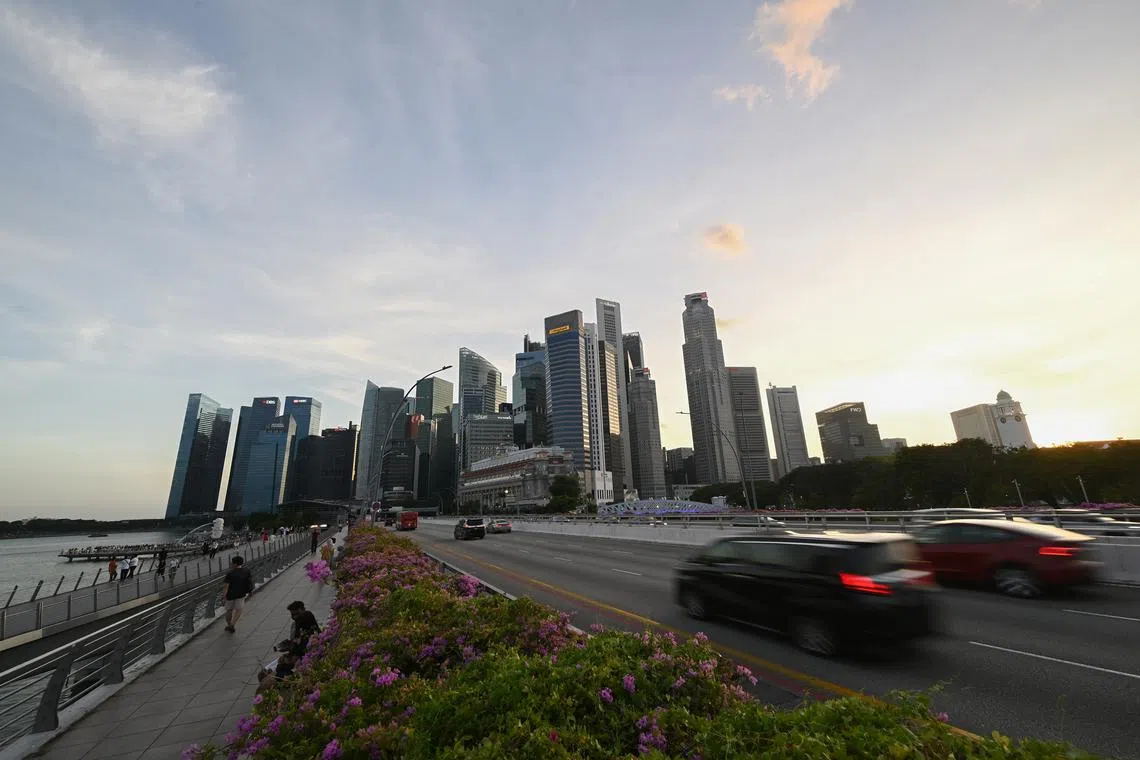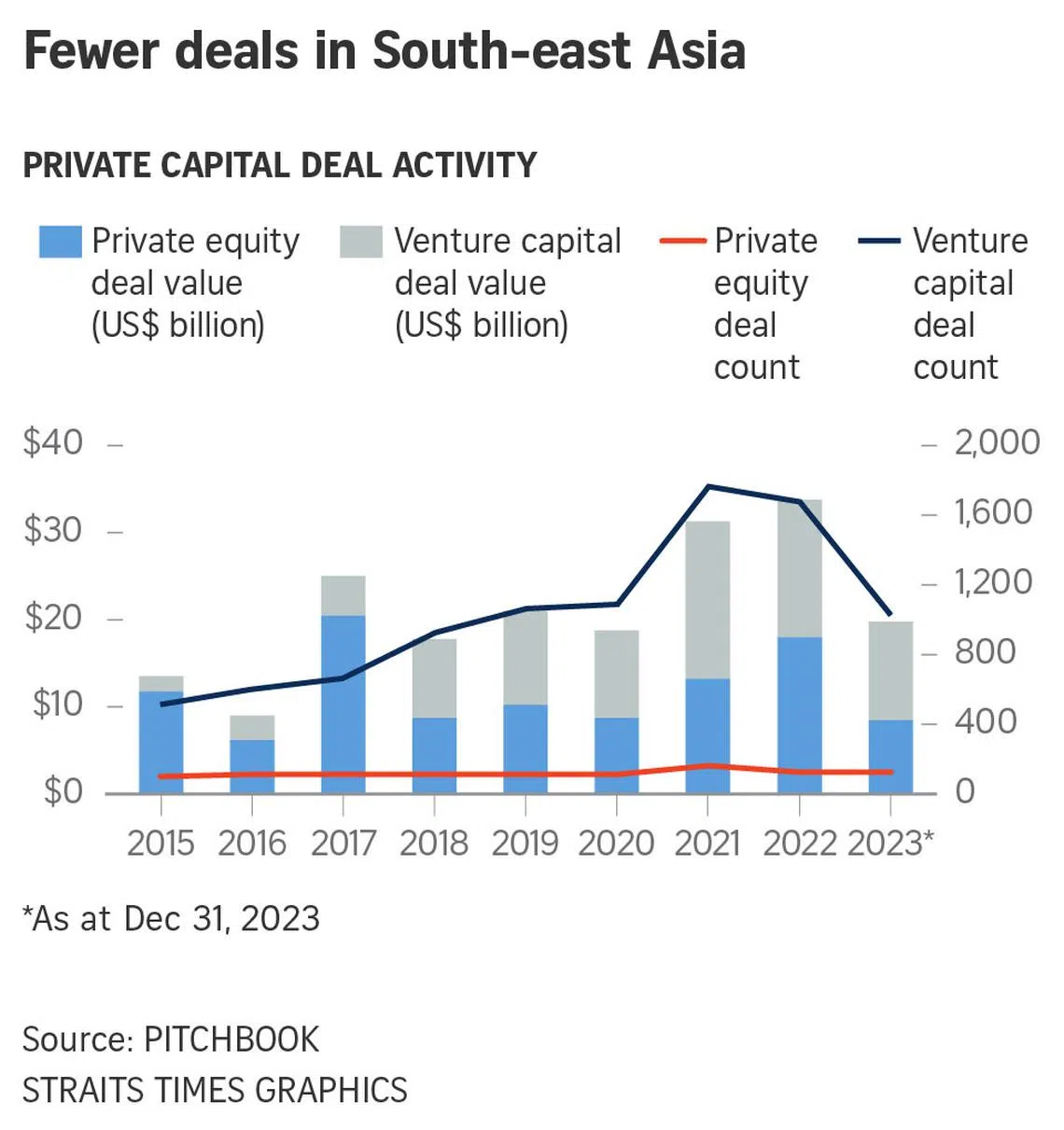Firms in South-east Asia looking to grow face funding gap as late-stage capital dwindles
Sign up now: Get ST's newsletters delivered to your inbox

Between 2015 and 2023, Singapore generated nearly 6,000 private equity and venture capital deals.
ST PHOTO: AZMI ATHNI
Follow topic:
SINGAPORE - South-east Asia has a robust pipeline of high-quality start-ups that are finding it hard to secure funding at a time when they need cash to grow, resulting in a dearth of large deals.
While the region has been abuzz with private capital investments in recent years, the excitement was centred on the early-stage venture capital (VC) space for nascent start-ups. There were fewer deals in private equity (PE), which tends to invest in mature companies operating in traditional industries.
Ms Kaidi Gao, a VC analyst at research firm PitchBook, told The Straits Times that the funding gap is a challenge for companies looking to grow.
“Unlike the United States, where there is comprehensive financing coverage across the venture life cycle, from a company’s inception all the way to public listing, South-east Asia lacks robust funding support for the later stages of a venture,” she said.
In addition, many PE investors put dealmaking on hold in 2023, due to worries about slowing economic growth, high interest rates that raised the cost of debt, and volatile stock markets.
Yet, venture-backed companies need to raise more capital during their growth stage, which is when their business models are proven and the focus shifts from experimentation to scaling.
Without additional capital injections, these companies are unable to hire experienced staff, expand geographically and explore mergers and acquisitions, as well as other levers, to scale and become sustainable and profitable companies.
Between 2020 and 2023, the proportion of VC funding rounds in South-east Asia with a ticket size north of US$25 million (S$34 million) remained below 9 per cent of deals.
VC firms have also scaled back on investments. Nearly 70 per cent of the VC firms that have raised a fund to invest in start-ups and new ventures since 2015 have only one fund now or are still investing out of their first one.
Ms Gao added that cash returns are expected to remain elusive for private investors in South-east Asia.
While the goal for many regional private investors is to sell their shares in portfolio companies on local exchanges within South-east Asia, there has also been a lack of blockbuster exits that drive outsized financial returns from a fund perspective, she said.
Still, within South-east Asia, major markets including Singapore, Indonesia and Vietnam have attracted a higher level of interest from private capital
Singapore has received the highest share of the funds. Between 2015 and 2023, the Republic generated nearly 6,000 PE and VC deals, making it the largest market regionally in terms of deal value and volume.
Singapore’s investment company Temasek and sovereign wealth fund GIC have been core to the region’s private capital ecosystem, connecting different markets within the region.
In recent years, the Singapore Exchange, too, has sought to strengthen its range of fund-raising options through initiatives like dual-listing collaborations with overseas exchanges and the launch of the special purpose acquisition companies framework to allow blank-cheque companies to list on the bourse.
Ms Gao said that compared with its regional peers, Singapore’s private capital landscape is closer to the US in terms of the set-up of market participants and the availability of various investment facilities, but the Republic still needs more managers to support founders of early-stage ventures.

Beyond South-east Asia, the value of PE deals in the Asia-Pacific fell to US$147 billion, 23 per cent below 2023 and 59 per cent below the 2021 high of US$359 billion, said consultants Bain & Company.
Exits plunged to US$101 billion in 2023, down 51 per cent from the record-breaking level in 2021, while fund raising tumbled to its lowest level in 10 years.
Money was channelled and made in the technology sector as investors bet on assets related to energy transition.
Japan was a bright spot, as it was the only country that saw a rise in deals.
The number of active investors in the Asia-Pacific region fell to 2,535 in 2023, down 25 per cent from 2022.
Bain & Company noted that many leading funds have started to explore alternative asset classes, including infrastructure and private credit as a key source of growth.


